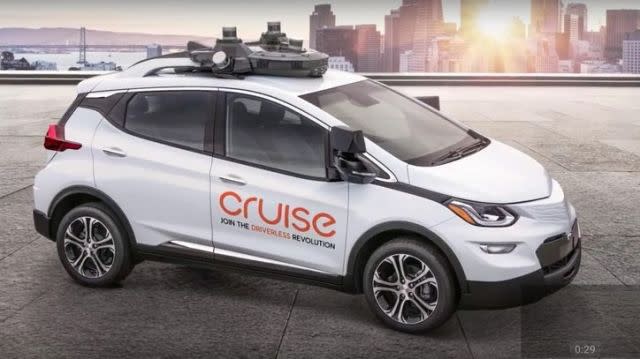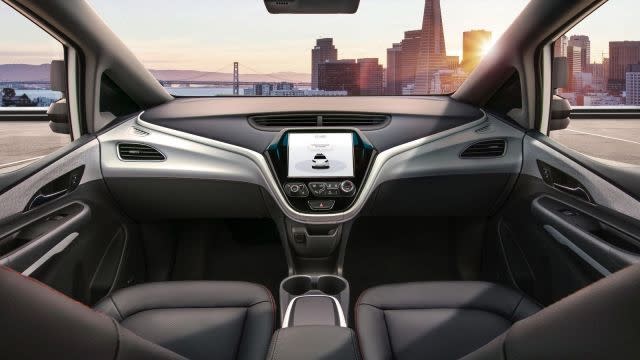GM plans driverless ride-hailing service without manual controls for 2019
Non-traditional manufacturers are certainly making an effort to get in on the act of developing driverless vehicles and bringing them to market, but now one of the giants of the auto industry is hitting back with its own ambitious plans. General Motors has just announced plans to launch its own public ride-hailing services with self-driving vehicles that don't have any manual controls such as steering wheels and pedals at all, and it intends them to begin operating as soon as 2019.
On Thursday GM submitted a petition to the NHTSA detailing the safety features of the "Cruise AV" vehicle. The petition requested federal officials to allow these vehicles to operate on American roads without them having to meet 16 Federal Motor Vehicle Safety Standards that are currently in place to cover vehicles that have human drivers, but are not necessarily applicable for driverless vehicles.
If the petition was to be granted by the NHTSA, it would clear the way for GM to launch up to 2,500 driverless vehicles per year as a type of taxi service, and would also help to move fully autonomous vehicles from restricted niche testing into wider commercial applications.
The Cruise AVs, which are models based on the current Chevrolet Bolt EV, are the fourth-generation of autonomous vehicles from Cruise Automation, which is a San Francisco startup General Motors bought out in March 2016. Each vehicle feature five lidar detectors, 16 cameras and 21 radars that all work to provide redundant sensing and fail-safe systems just in case one of the technologies fails.
One of the standards GM is asking to be waived is the requirement for vehicles to have airbags in their steering wheels, which wouldn't of course be possible for vehicles that don't have a steering wheel in the first place. Instead, the Cruise AV has an airbag that mirrors the one on the right front-passenger side that provides an equivalent level of safety.
Obtaining a federal waiver would permit GM to operate the vehicles in the seven or so states that don't already have laws that restrict such vehicles. In other states, the GM would have to work with local officials to get the rules changed.



